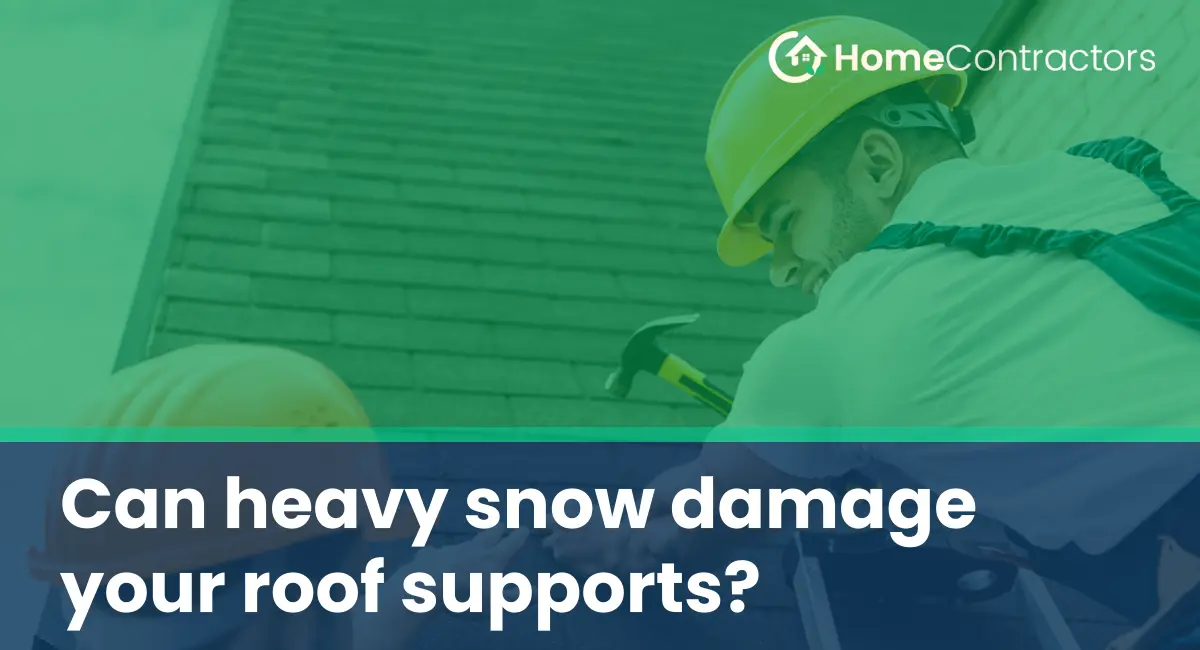- ————————————————————-
- —————-
Winter snowstorms bring scenic landscapes and joyful snowball fights, but they can also pose threats to the structural integrity of our homes. One significant concern homeowners face during snowy winters is the potential damage heavy snow can inflict on their roof supports. This article will explore the impact of heavy snow on roof supports, potential risks, signs of damage, and measures to prevent and mitigate potential problems.
Understanding Roof Supports
- ————————————
Before delving into the potential damage caused by heavy snow, it’s essential to understand the role of roof supports in a building’s structure. Roof supports, typically made of wood or steel, form the framework that distributes the weight of the roof evenly while maintaining its stability. These supports also provide structural integrity, ensuring the roof can withstand external forces like snow loads, wind, and natural elements.
The Impact of Heavy Snow
- ——————————-
Roofs are designed to withstand various weather conditions; however, the accumulation of heavy snow can exceed their load-bearing capacity, leading to increased stress on the roof supports. As snow accumulates and remains on the roof for an extended period, it adds significant weight, which, combined with gravity, can strain the roof supports beyond their limits.
Potential Risks and Indicators of Damage
- ————————————————–
- Overload and structural damage: One of the primary risks associated with heavy snow is an overloaded roof. As snow accumulates, the weight increases, potentially exceeding the maximum load capacity of the roof supports. This excessive stress can cause the supports to weaken, bend, sag, or even collapse, endangering the entire structure.
- Roof leaks: Heavy snow can cause ice dams, which block the natural flow of melting snow from the roof. When excessive snowmelt cannot drain properly, it can seep into the roof system, leading to leaks and potential water damage to the supports and interior of the property.
- Warning signs of damage: Homeowners should be vigilant in detecting signs of potential roof support damage caused by heavy snow. Indicators may include sagging or warped rooflines, visible cracks or splits in support beams, unusual creaking or sagging sounds from the roof, and interior damage such as cracked ceilings or exposed rafters.
Prevention and Mitigation Measures
- ——————————————-
- Snow removal: Regular snow removal from the roof can significantly reduce the risk of damage to support structures. However, this should only be done following proper safety protocols and with the assistance of professionals, as untrained individuals attempting to clear snow from the roof can be hazardous.
- Reinforce support structures: For areas prone to heavy snowfall, reinforcing roof supports during construction or renovation can provide additional strength. Consult a structural engineer to ensure the supports can accommodate heavy snow loads.
- Insulation and ventilation: Proper insulation and ventilation in the attic can help prevent ice dams from forming and reduce the risk of damage caused by melting snow. Adequate airflow and insulation ensure that the roof remains at a consistent temperature, minimizing the potential for snowmelt and ice formation.
- —————-
While heavy snowfall can create picturesque winter landscapes, it also poses risks to the structural integrity of our homes. With an understanding of the impact of heavy snow on roof supports, recognizing potential risks, and implementing preventative measures, homeowners can safeguard their properties against damage. Regular inspections, snow removal when necessary, reinforcement of supports, and proper insulation and ventilation are all crucial in maintaining the longevity and safety of a roof’s infrastructure in snowy climates.
